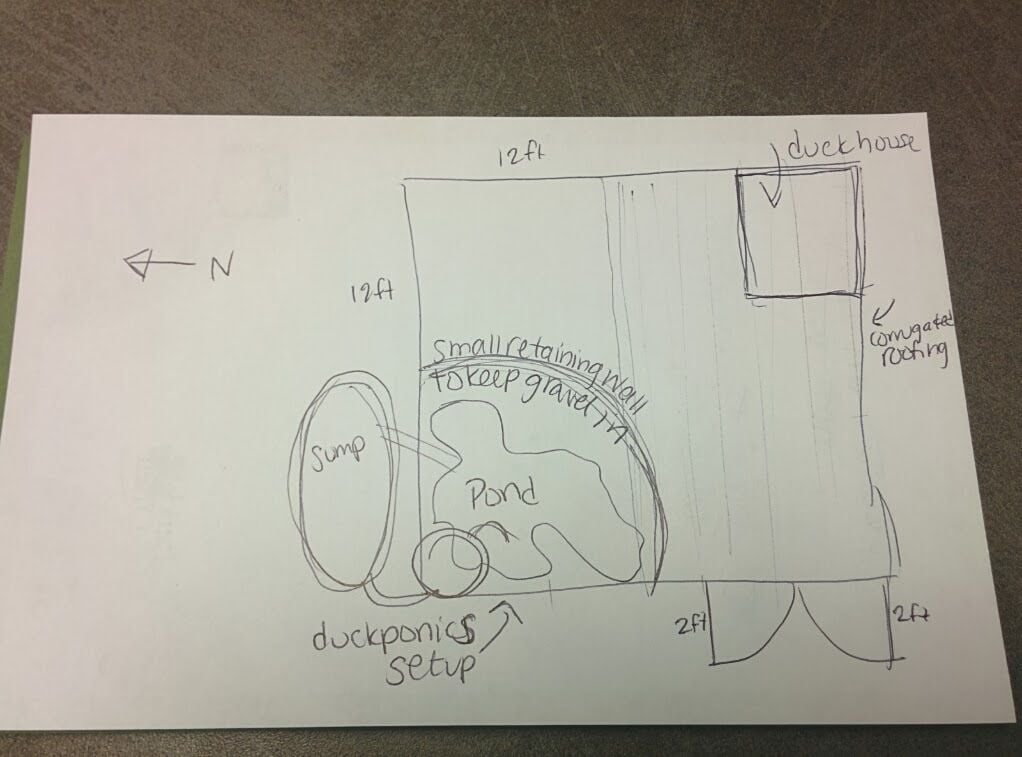I've been researching and planning and obsessing and nagging for the last few months, and we finally broke ground on what I've been referring to as "Duckingham Palace." It's a 12x12 duck pen in the corner of our small suburban lot. The plan for the pen is that it be a predator-resistant permanent enclosure that the ducks can live in 24/7, with supervised free ranging in the fenced back yard during evenings and weekends. I've been collecting components for it over the last couple months, so I have a large plastic pond liner shell that I'm drilling(!) and installing a shower drain in, and a doghouse that I've modified so that the roof is hinged and lifts up for easy access to eggs and for cleaning. The pond will eventually get hooked up to some sort of duckponics setup with a large sump for growing fodder located outside of the enclosure, but that'll be after I have the ducks and things have calmed down a bit.



Here's the site. We went with untreated lumber to avoid any unplanned for chemicals leaching into the soil and affecting the ducks who's eggs we'll be eating. To prevent too much lumber-to-ground contact, we buried pier blocks into the sandy soil, and used those as a base. Half of the enclosure will be roofed with clear polycarbonate to give me a dryish place for food and the duck house, and half will be covered in 2x4" welded wire mesh to allow the ducks to enjoy our Seattle rain, but keep raccoons and hawks and whatnot out.


The top run of wire will be 4' tall (connecting up to the 2x6" header) 2x4" welded wire mesh, and the bottom 2' of the run will be 1/2" hardware cloth that's been buried a foot into the ground to prevent digging. The slope should help with drainage.
Any input? Constructive criticism is definitely appreciated, I'd rather know that I'm making mistakes before I build them into the design.
Here's the site. We went with untreated lumber to avoid any unplanned for chemicals leaching into the soil and affecting the ducks who's eggs we'll be eating. To prevent too much lumber-to-ground contact, we buried pier blocks into the sandy soil, and used those as a base. Half of the enclosure will be roofed with clear polycarbonate to give me a dryish place for food and the duck house, and half will be covered in 2x4" welded wire mesh to allow the ducks to enjoy our Seattle rain, but keep raccoons and hawks and whatnot out.
The top run of wire will be 4' tall (connecting up to the 2x6" header) 2x4" welded wire mesh, and the bottom 2' of the run will be 1/2" hardware cloth that's been buried a foot into the ground to prevent digging. The slope should help with drainage.
Any input? Constructive criticism is definitely appreciated, I'd rather know that I'm making mistakes before I build them into the design.



